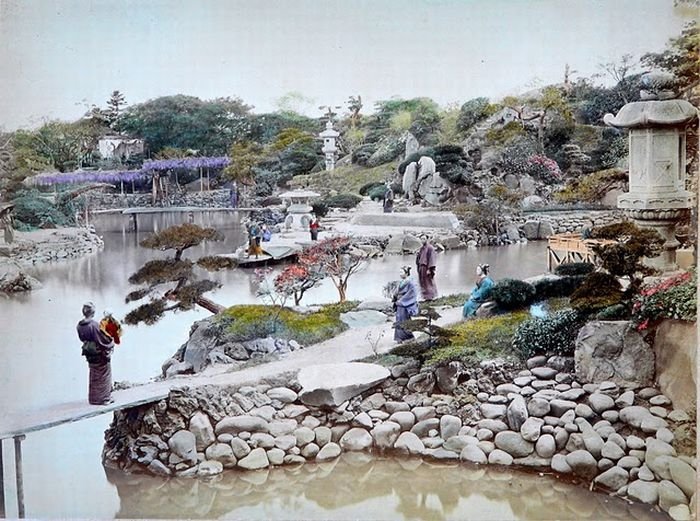|
|
History: Old Japan
|
Feudal era
Japan's feudal era was characterized by the emergence of a ruling class of warriors, the samurai. In 1185, following the defeat of the rival Taira clan, Minamoto no Yoritomo was appointed Shogun and established a base of power in Kamakura. After Yoritomo's death, the Hōjō clan came to rule as regents for the shoguns. Zen Buddhism was introduced from China in the Kamakura period (1185–1333) and became popular among the samurai class. The Kamakura shogunate repelled Mongol invasions in 1274 and 1281, aided by a storm that the Japanese interpreted as a kamikaze or Divine Wind. The Kamakura shogunate was eventually overthrown by Emperor Go-Daigo, who was soon himself defeated by Ashikaga Takauji in 1336. The succeeding Ashikaga shogunate failed to control the feudal warlords (daimyo), and a civil war (the Ōnin War) began in 1467 and opened the century-long Sengoku period (“Warring States”).
During the 16th century, traders and Jesuit missionaries from Portugal reached Japan for the first time, initiating active commercial and cultural exchange between Japan and the West (Nanban trade). Oda Nobunaga conquered numerous other daimyo by using European technology and firearms, and had almost unified the nation when he was assassinated in 1582. Toyotomi Hideyoshi succeeded Nobunaga and united the nation in 1590. Hideyoshi invaded Korea twice, but following several defeats by Korean and Ming Chinese forces and Hideyoshi's death, Japanese troops were withdrawn in 1598.
Tokugawa Ieyasu served as regent for Hideyoshi's son Toyotomi Hideyori, using his position to gain political and military support. When open war broke out, he defeated rival clans in the Battle of Sekigahara in 1600. Ieyasu was appointed shōgun in 1603 and established the Tokugawa shogunate at Edo (modern Tokyo). The Tokugawa shogunate enacted a variety of measures such as Buke shohatto to control the autonomous daimyo. In 1639, the shogunate began the isolationist sakoku ("closed country") policy that spanned the two and a half centuries of tenuous political unity known as the Edo period. The study of Western sciences, known as rangaku, continued during this period through contact with the Dutch enclave at Dejima in Nagasaki. The Edo period also gave rise to kokugaku ("national studies"), the study of Japan by the Japanese themselves. According to one authority, there were at least 130 famines during the Edo period, of which 21 were particularly serious.
|
|









